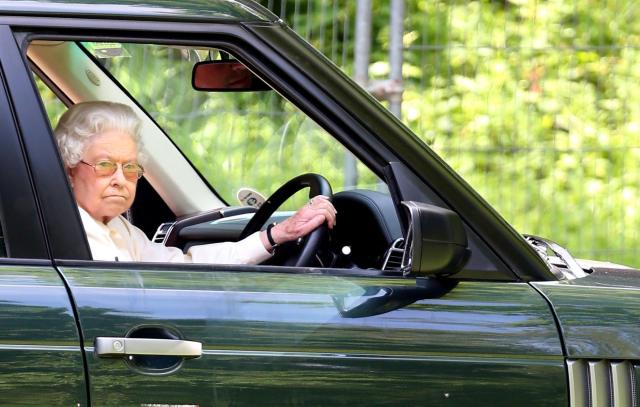Steve Parsons/PA

If you want to know what soft power looks like, consider Queen Elizabeth II. While hosting the Crown Prince of Saudi Arabia at Balmoral, she offered him a tour of the grounds and then jumped in the Land Rover and drove him round the estate herself.
Without saying a word, she demonstrated the normality of her driving a car to the leader of a country where women were banned from driving. She just got on and did it.
Vox described it as a ‘hazing’ and HuffPost called her a ‘badass’. We Brits don’t tend to think of the Queen in quite those terms, but we’re bursting with pride at her quiet demonstration of the contrast between the way we do things and the way that Saudi’s rulers do.
Saudi Arabia’s driving ban had been attributed to the teachings of the ultra-conservative Wahhabi form of Islam but a couple of weeks ago the ban was lifted.
Women are now allowed to drive, although they remain highly restricted, both in travel and other freedoms.
The jury’s out as to whether this change is more religious, political or cultural, and of course the three factors often affect each other. The Dalai Lama once told the New York Times: “I’ve gained an awareness of the sensitivity of women’s issues; even in the 1960s and 1970s, I didn’t have much knowledge of this problem.” Religious leaders are products of their time.
It might all feel like tiny progress to those who would like to see much more parity of opportunity for women and men around the world – not least because Saudi women drivers will still be heavily restricted and require permission from a male guardian. But this step sends a signal: to Western audiences and also to Pakistan and other areas where Saudi-influenced Wahhabism has a presence. Communities in Pakistan, Indonesia and Bangladesh look to Saudi Arabia for their moral guidance as well as their funding, and this decision will be noted there.
Women and religion
Data often suggests that women are more religious than men and more likely to pray often, although the indicators used to identify religiosity necessarily vary between religions, based on their traditions. Christian women are more likely to attend church than men are, but Muslim women are more likely to pray at home than publicly because attendance at mosque is more usually required of men than women.
Feminism and religion
There’s far more to say on women’s opportunities, freedoms and religious roles than there is room for here, but Kristin Aune’s helpful summary of the relationship between secular feminism and religion notes a three-stage journey from feminism versus religion with adversarial debates about power structures and the role of the state, through feminists turn to spirituality where female-centred spiritualities gained support, to religious feminists and the increasing voice of gender debates in some formal religions. Linda Woodhead notes that the changing role of women in the workforce occurs simultaneously with female disaffiliation from some formal religions.
Further reading
Manual al-Sharif was arrested and jailed for driving in Saudi Arabia.
Karen Armstrong explores Wahhabism, fundamentalism and the terrorism of so-called IS.










Join the discussion
Join like minded readers that support our journalism by becoming a paid subscriber
To join the discussion in the comments, become a paid subscriber.
Join like minded readers that support our journalism, read unlimited articles and enjoy other subscriber-only benefits.
Subscribe